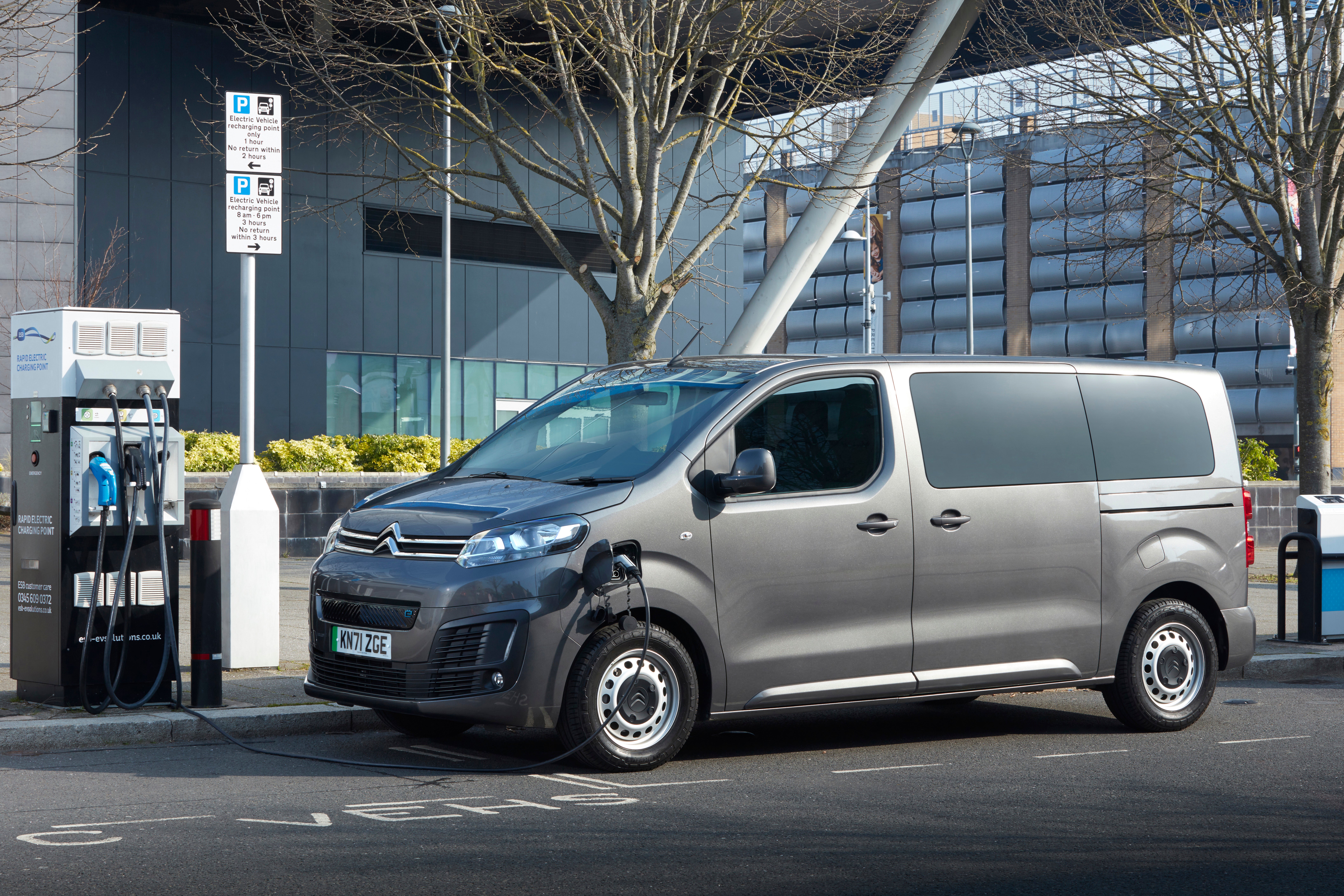Citroën ë-SpaceTourer: lots of room, not so much range
Representing the future of driving for large families, this multi-purpose vehicle is pleasant enough to drive if somewhat drab, says Sean O'Grady


So, out of sheer curiosity, I thought I’d get around to trying Citroën ë-SpaceTourer Business Edition M 50kWh, and not just because it’s got a very long name with a random accent on the e, which means it should be pronounced “eh”, like the e in “bet”. Which is correct in Citroën, but not in ë-SpaceTourer, so I can’t be bothered with it. It’s like those Gü puddings, I reckon, or Häagen-Dazs ice cream, a purely marketing thing, and I’m not having it. So it’s e-SpaceTourer.
Anyway, I was bumbling around in this all-electric (not all-ëlectric) battery-powered nine-seater multi-purpose vehicle, pretending to be a real man in charge of a commercial vehicle, and my mind eventually turned to what the “target demographic” for the e-SpaceTourer might be. Who, in other words, needs a version of a van with nine seats with a range of about 135 to 196 miles (round town)? That’s according to the official WLTP figures, by the way: the excellent ev-database.org puts it as low as 95 miles in cold weather on the highway, but 165 miles on a nice warm summer’s day – such things make a difference in all-battery vehicles.
THE SPEC
Citroën ë-SpaceTourer Business Edition M 50kWh
Price: £24,270 (as tested, base model at £32,895)
Propulsion: Single electric motor, powered by 50kWh battery
Power (hp) : 136
Top speed (mph): 81mph
0-60 (seconds): 13.1
Economy (Wh/mile): 409
Range (miles): 135-196
CO2 emissions: 0
But the question stands, because the range isn’t that impressive by contemporary standards, and I suspect that with nine on board and some baggage it would be been more limited. I guess one answer would be taxi drivers, and the car does have the great advantage of being fairly quick to recharge – about 30 minutes from low to about 80 per cent at my favourite local commercial fast charger, run by Instavolt in one of their McDonald’s outlets. By the time I’d had my tea and McPlant artificial meat burger the e-SpaceTourer was ready for action again, so I’m thinking it is a practical possibility. It wouldn’t do too many airport runs, however. It manages to keep with traffic, but you need to keep it in its “economy” mode to get the most out of the battery – and forget about performance.

You also always have to remember, as with all such people-carrying niche vehicles, that if you use all three rows of seats there isn’t much of a boot left. You can fold all the seats down, and in multiple permutations, but in the end, like Brexit, you can’t have your cake and eat it. Something would have to give. The “M” in my test car signified a shorter wheelbase model. You can specify a bigger cake, so to speak, by specifying a longer wheelbase and boot, the “XL”, and a plusher interior in “Flair” rather than “Business” trim, but that will cost you another £12,000 and push the purchase price to nearly £50,000. Obviously the electric vehicle will be cheaper to run, even at today’s tariffs, but whether it makes sense does depend on the mileage you intend to do in it and the type of driving. The basic design is perfectly good for an MPV. It’s quiet, comfortable and, being van-based, it enjoys good ergonomics, but it’s not quite cutting-edge, so you have a small screen and a manual handbrake, for example. The interior is a bit sombre, and the van-based colours are pretty dull – 50 shades of grey and less fun.
Later on, sitting nice and high up all the better to admire the frosted landscapes, I thought Citroen’s big people carrier – and there’s ample room for eight adult passengers in the thing – would suit a big family. I was inevitably reminded of that great story about Groucho Marx. After he finished with the movies, Groucho did some TV quiz shows and the like, and in one of them he welcomed a married couple onto the set. He asked them a few questions about themselves, and the wife volunteered that she had some enormous number of offspring - even more than might fit in a Citroen e-SpaceTourer indeed, 10 or 11 or so. Raising those famous eyebrows Groucho asked, “why do you have so many kids?” “I love my husband very much” she sighed, to which Groucho responded: “I love my cigar too, but I take it out of my mouth every once in a while.”

Sadly, research suggests this well-worn anecdote may be apocryphal, but for that mythical lady and her large family going for a day out or making the multi-point school run, the Citroen might well be ideal. It’s certainly a minority market, but a useful top-up to the many thousands of these ubiquitous vans that pour out of the Vauxhall plant at Luton, complete with Citroen, Peugeot, Vauxhall and Toyota badges attached to them. Unassuming as this van/car is, it represents the future of the British automotive sector in the post-fossil fuel age. It’s carrying a lot of hopes, then, as well as people. And, with that, as Groucho would say, I must be going.
Join our commenting forum
Join thought-provoking conversations, follow other Independent readers and see their replies
Comments
Bookmark popover
Removed from bookmarks